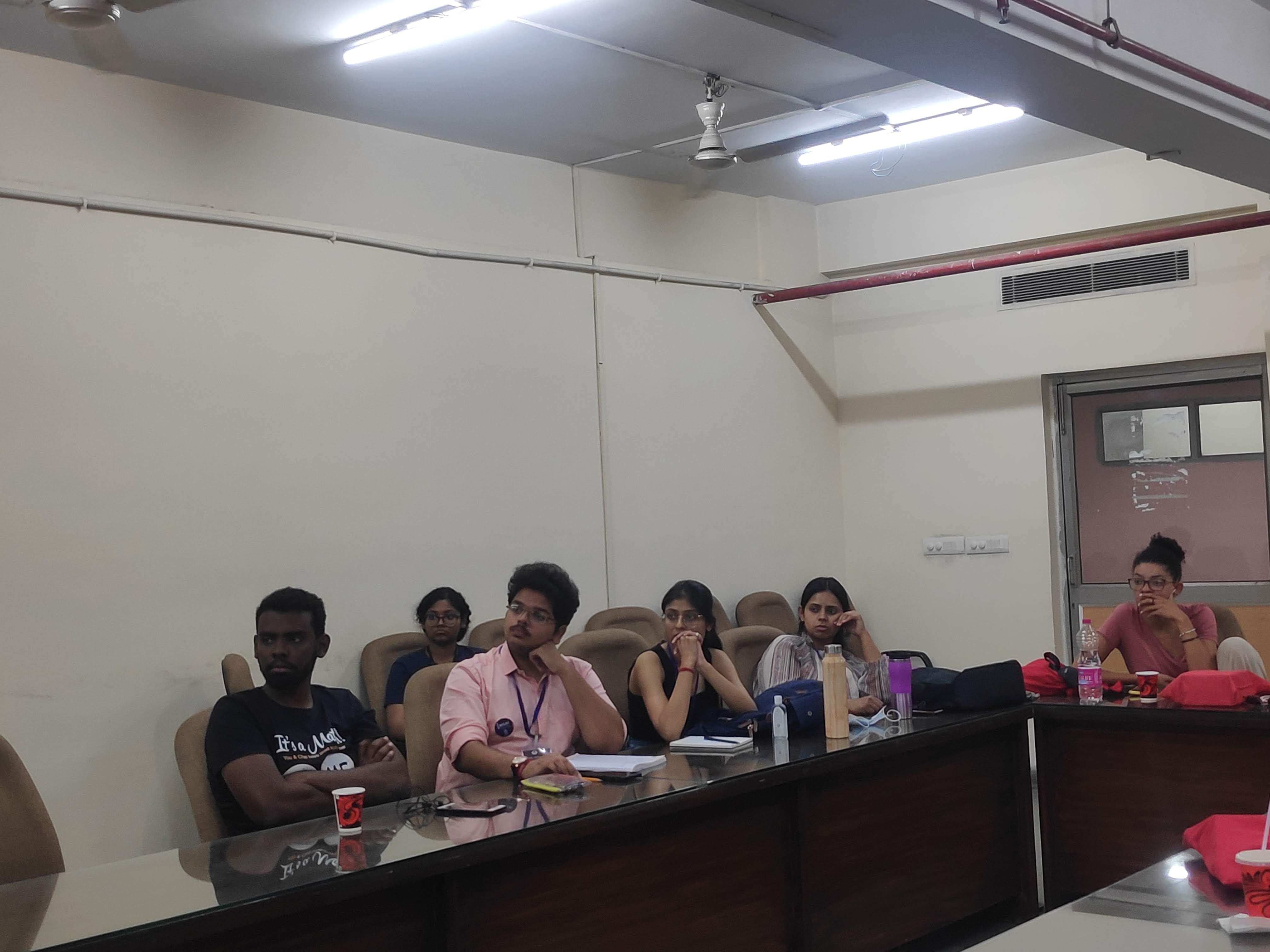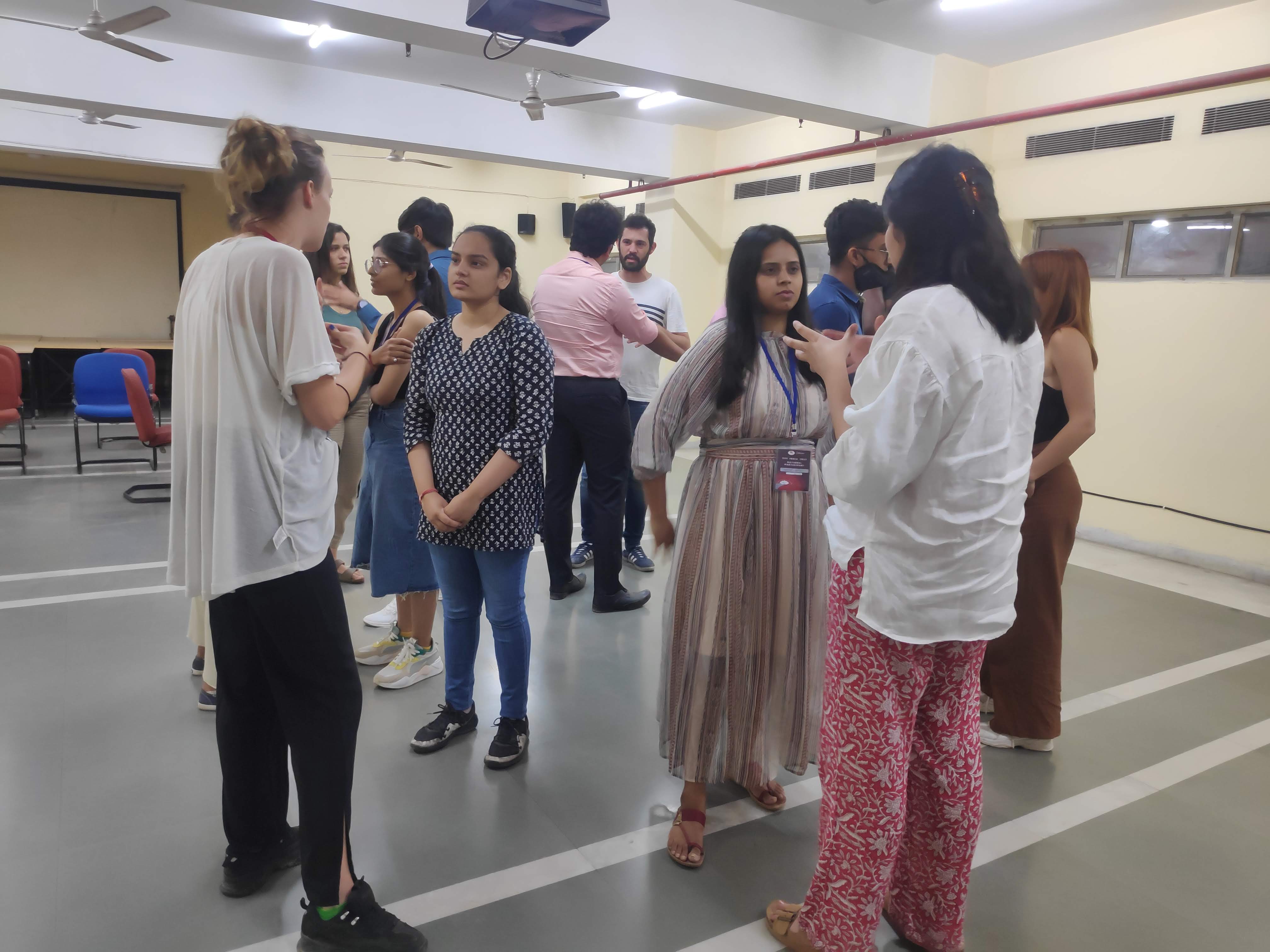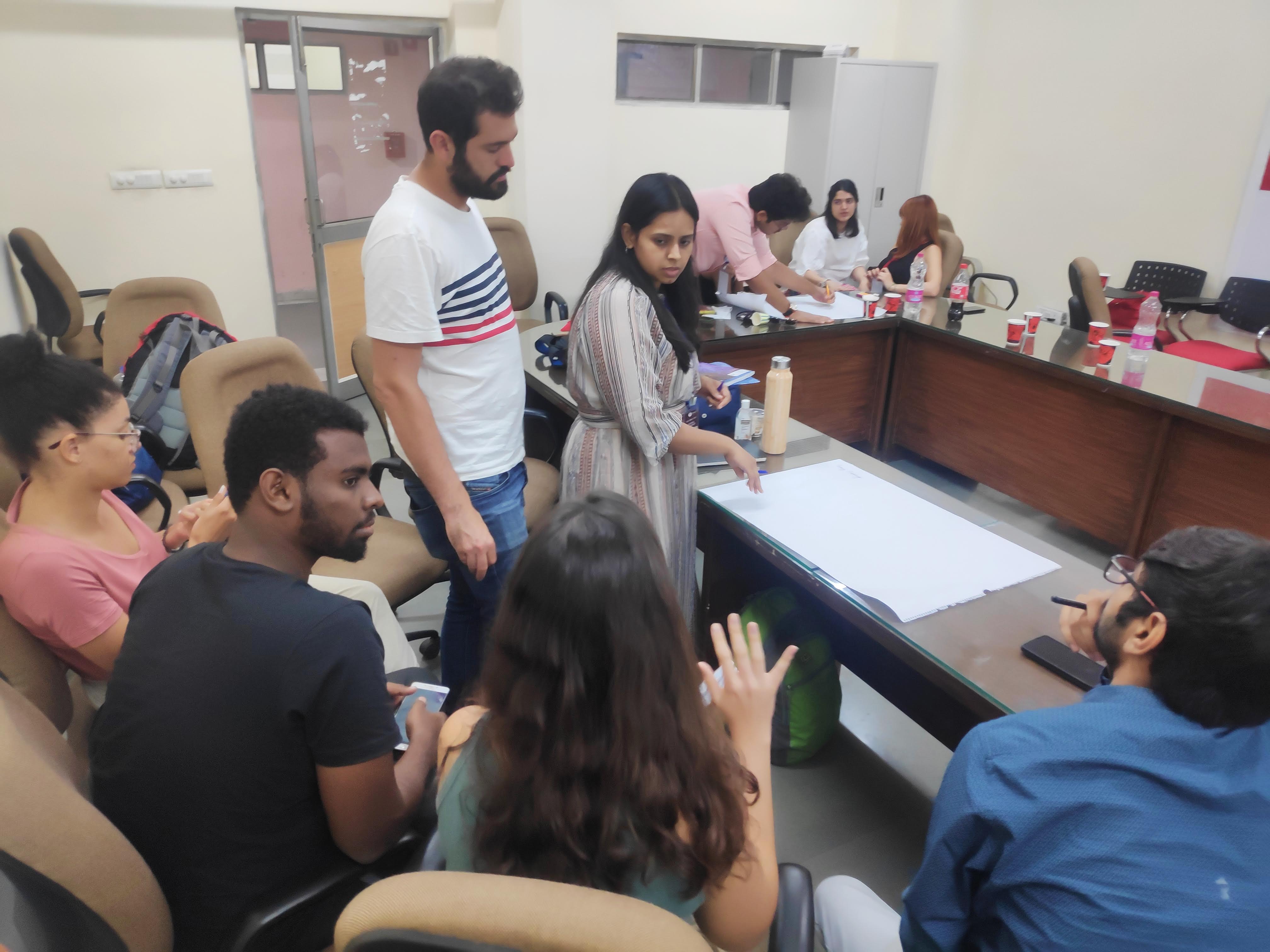
The connection between mental and emotional wellbeing and stigmatised identities is perhaps most easily understood and therefore a good entry point to the theme. Stigma and minority stress, specifically in the context of LGBTQIA+ lives, are now a well-researched area. At the intuitive level of individual understanding, away from the realm of research and study, it is not hard to imagine and understand how feeling and being stigmatised can negatively impact one’s relationship with oneself and the world. In a study based on a review of research from 2009 to 2019, Wandrekar and Nigudkar (2020) write of the relationship between stigma and mental health, highlighting that:
- LGBTQIA+ Individuals Experience Stigma
- Stigma Is Related to Mental Health Conditions
- Some Factors May Protect LGBTQIA+ Individuals From Stigma and Mental Health Conditions
They identify “resilient coping” and “social support” as mediating factors between stigma and depression. Peer and partner support, family acceptance, and LGBTQIA+ community support are key aspects of social support. How far can we extend this concept of acceptance and support to spaces beyond the immediate circle? A public area or facility such as a washroom, or something bigger such as a health centre, clinic or hospital?
What does it mean to extend acceptance and support in one of life’s most crucial areas – the workspace? How do we unpack the concept of positive discrimination and affirmative action at the level of the organisation? Positive discrimination and affirmative action, linked concepts, sometimes used interchangeably, continue to evolve in meaning. They remain the subject of debate across diverse spaces, most particularly political, administrative, economic, legal, NGO, corporate, and social spaces. They are generally understood in the context of policies and specific interventions that provide favourable treatment or special measures to reduce inequality and support those who have been consistently discriminated against and marginalised.
For this issue of In Plainspeak focusing on mental health and sexuality, we’d like to invite you to a quick window view of aspects of mental health, specifically stress, burnout, self-care and community care at the workspace. These life experiences, and sexuality, connect in different ways. Understanding this connection is integral to inclusion.
TARSHI’s efforts in any space intend to foster non-judgmental, rights-based and sexuality-affirming attitudes, where people’s sexuality, identities, choices, and self-care needs are respected and prioritised.
- We call these spaces ‘SISA’ – Safe, Inclusive, Self-Affirming.
- In our work over the years, we have chosen to focus on four intersecting theme areas that influence SISA spaces – LGBT*QIA+, Disability, Psychosocial wellbeing + stress, burnout and self-care, and Anti-discrimination.
Last year, we conducted in-depth interviews (IDIs) and surveys for our ongoing research on SISA spaces, focusing on aspects of organisational policy and implementation − towards identifying good practices.
- About 40 individuals and respondents from over 15 organisations generously engaged with us during this process. We are deeply appreciative of the energy and wisdom they have contributed.
- Follow-up and further work based on the experiences and knowledge shared with us is still underway, but key inputs for this article have emerged from this engagement.
We state at the outset that at TARSHI too our engagement with these themes is ongoing, and work-in-progress. As we welcome new team members who bring their own, diverse, lived experiences, we adapt old methods and create new ones. It is in the awareness, the practice, and in course-correction as and when needed, that our learning culture continues to evolve.
Approaching mental health, wellbeing, stress and burnout:
The pandemic has catalysed a widespread introduction of mental health and wellbeing words and concepts into the work environment. As Nidhi Chaudhary and Titas Ghosh, who conducted the interviews on behalf of TARSHI, noted during this engagement, most organisations are proactive in bringing up conversations around mental health, stress and burnout since the pandemic began.
Stress has no one single definition but has been variously understood from medical and non-medical perspectives. Stress may be seen as part of a process that has the potential, ultimately, to lead to burnout. In the 1980s Christina Maslach, a social psychologist and pioneer in this area of work, articulated a commonly accepted definition of burnout: “a syndrome of emotional exhaustion and cynicism that occurs frequently among individuals who do ‘people-work’ of some kind.” [1]
The interconnectedness of everything:
A wide variety of observations emerged from our conversations with people, but the highlight lay in the interconnectedness of everything. This is particularly true of the way mental health intersects with all diverse life conditions, identities and experiences.
Participants from a TARSHI session on safe spaces, inclusion and mental health
(1) Organisations that are specifically working in a theme area such as mental health, have their own unique sensitivity to that theme in particular. On the flip side, theme areas that are not specifically in the purpose and work mandate of the organisation, and are therefore less familiar in conversation and practice, tend to receive less organisational energy. Critically, experience and understanding of intersectionality hugely impact the ability to create a safe and inclusive environment that continues to evolve with evolving requirements. As one of our research respondents pointed out − being a part of the LGBT community, there is a greater recognition of how others from the community experience multiple challenges. The willingness to deal with this becomes a factor for an organisation to consider. We see that organisations are opening out the space for exploring learning-exchange processes with each other through engagements such as training programs that enable experience and expertise sharing.
(2) Recruitment policies and practices offer the opportunity for positive discrimination through affirmative action and many organisations are evolving their own processes and understanding of this.
Some organisations spoke to us about:
- recruitment methods that factor in experience and qualifications regardless of social identity, and where the only background checks are related to work experience;
- anti-discrimination policies that have evolved from a feminist perspective and align with an affirmative action approach towards persons from marginalised communities;
- an intentional hiring approach with tools such as a point system developed by the organisation to specifically factor in marginalisation;
- hiring practices that take the support of social media accounts run by persons/ organisations identifying with different marginalised communities;
A respondent put forward a note of caution important to successful practice. They speak of the need for sensitisation to help create an inclusive environment to sustain and support successful inclusive hiring.
(3) While this may appear to be obvious, practice continues to highlight the importance of bringing grassroots experiences and voices to the big corporates and organisational entities. One of our interviewees, working specifically on issues of diversity and inclusion, refers to the gap between the policies and implementation when people working on/around LGBTQIA+ policies are disconnected from ground reality. Such a disconnect would be an obstacle, hindering clear assessment of needs. Since needs assessment provides a strong foundation for design of policy and planning implementation, starting off right becomes non-negotiable.
Discussing safe spaces, inclusion and mental health across different constituencies
(4) A new language has already entered our lives, to understand and communicate concepts of: mind and emotion, spirit, purpose, cooperation, support and acceptance of the worth and the legitimacy of different life experiences. New practices reveal a growing awareness of how changes may be deliberately created as part of organisational development. We are hearing of:
- the integration of weekly learning sessions into organisational practice, where external or internal resource people facilitate discussion on different subjects (such as alternative justice, gender identity etc.);
- the importance of being aware of particular areas within an organisation that may require particular focus. For example, a programmes team may be more sensitised to the language of inclusion and safety than perhaps a finance team. These are specific areas that require more attention or they become the gap.
- Organisations are still working within the old paradigm, and new ways of perceiving productivity and targets, new measures of success and desired outputs and outcomes have not yet caught up with the conversations.
The issue of accountability, and the potential for conflict between what is reasonable accommodation and productivity requirements, comes up often. The question of how to negotiate a path between being answerable to stakeholders and creating an environment supportive of the individual’s unique needs remains a constant challenge.
(5) Organisational sensitivity and a supportive environment depend on the people, and daily practices. At the workplace of one of the organisations we spoke to, team members have lived experience of support needs, and of coming together as a support group. So, practice has included, that when required, an individual facing risk of harassment in public space because of their gender identity is accompanied by colleagues. In another organisation, team members have been trained and certified for queer affirmative counselling. Networking and connecting with those taking forward and providing professional support in this area of intersecting issues, marginalised identities and mental health for example, is integral to expanding the safety net.
(6) An organisation’s value system creates an environment and culture where people living with visible as well as invisible disabilities are able to speak up. One of our interviewees shared that team members at their organisation are not required to disclose aspects of their identity with respect to disability, sexual orientation etc., but when there is such self-identification and disclosure, energy is focused upon accommodation and support specifically geared to the needs and requirements of the individual.
A few last thoughts − and feelings − to take home on the theme of practices facilitating inclusion: survey respondents particularly mentioned three aspects of the workspace to consider:
- having gender neutral washrooms
- washing your own utensils and
- having a resource centre or library open to all.
TARSHI aims to collaboratively work with stakeholders to build SISA spaces
Trainings have been mentioned by most respondents as key to implementing inclusion and safety. Sensitisation of all staff including ancillary staff is integral to the approach taken to these trainings. Unlearning is mentioned as important to the process of achieving desired change. An intersectional approach, self-identification and self-advocacy are highlighted as well.
While on the subject of advocacy and self-advocacy, it is an interesting fact that a survey respondent specifically used the word ‘cruelty’ and described the environment as cruelty-free. How we use language is an expression of how we approach these issues and the powerful feelings involved.
Respondents from another organisation had differing responses to issues of discrimination and disrespect. This points to another challenge which is − simply not knowing − that you don’t know how someone else is feeling, or what their experience has been. Our experience(s) of our identity is also an experience of intersectionality, and therefore each person has a lived experience unique to them.
Gender, sexuality, caste, class, opportunity, ability, mental health and wellbeing are integral to who we are and how we experience life. Therefore, the responsibility for safety, inclusion and self-affirming spaces and experiences lies with the wider community, across spaces, private, public, family, peer, work, social and political.
We greatly appreciate the time and insights shared with us by a number of individuals and organisations, while they were also dealing with the second wave of the pandemic in India.
Thank you, Nidhi Chaudhary and Titas Ghosh, for your deep engagement with these subjects and for organising and conducting the interviews and administering the survey.
A huge shout out to Vani Vishwanathan for the way you have led and anchored the team through this exercise, staying supportive, through long periods of time when all of us needed hand-holding, clarity and your grounded practicality.
[1] Maslach, C., & Jackson, S. E. (1981). The measurement of experienced burnout. Journal of organizational Behavior, 2(2), 99–113. Retrieved from https://smlr.rutgers.edu/sites/default/files/documents/faculty_staff_docs/TheMeasurementofExperiencedBurnout.pdf.
Cover Image: Photo by Annie Spratt on Unsplash


